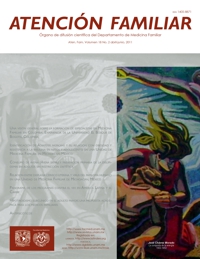Sub-clinical Hypothyroidism in the Elderly: an Academic Proposal for the Family Doctors
Main Article Content
Abstract
The most common form of thyroid dysfunction in the elderly is the sub-clinical hypothyroidism. Sub-clinical hypothyroidism is a biochemical state characterized by an increase of the stimulating hormone of the thyroid in serum and normal levels of free T4 and free T3. The purpose of this review is to deepen into the role of the detection of hypothyroidism and the need for treatment in sub-clinical hypothyroidism. Although studies show some criteria that define which patients require treatment, decisions must be individualized and based on laboratory values, symptoms, qualify of life of patients and the potential risk. Potential risks of sub-clinical hypothyroidism in the elderly include progression to clinical hypothyroidism, cardiovascular effects, hyperlipidemia, and neurological and neuropsychiatry effects, which should be evaluated in all patients with sub-clinical hypothyroidism.
sh: Sub-clinical Hypothyroidism, sht: Stimulating Hormone of the Thyroid, ch: Clinical Hypothyroidism, ihd: Ischemic Heart Disease, rr: Relative Risk, hz: Hazard Ratio.
